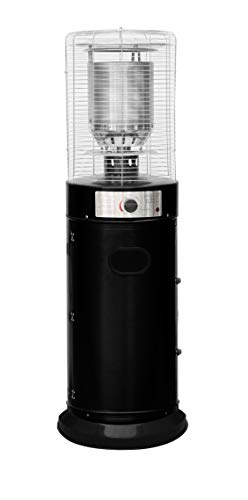20 Resources To Make You More Effective At Buy Gas Radiant Heaters
Buying Gas Radiant Heaters: A Comprehensive Guide
Gas radiant heaters have gained appeal over the last few years for their efficiency and ability to provide instantaneous warmth. As more homeowners and organizations try to find ways to keep their spaces comfy, comprehending the features, advantages, and factors to consider when purchasing these heating systems can be very helpful. Stylish Outdoor Heaters explores the intricacies of gas radiant heaters, helping potential purchasers in making notified decisions.
What are Gas Radiant Heaters?
Gas radiant heaters are devices that utilize propane or natural gas to emit heat straight into a room. Rather than heating the air, they warm items and individuals in their vicinity, providing convenience faster and effectively. Gas Powered Heaters are popular for both indoor and outdoor settings due to their adaptability and effectiveness.
Key Features of Gas Radiant Heaters
- Direct Heating: Unlike conventional heaters that warm the air, gas radiant heaters supply direct heat, making them an efficient choice for rapidly heating up spaces.
- Portability: Many designs are readily available as portable units, enabling them to be easily moved from one location to another.
- Fuel Variety: Gas radiant heaters can be powered by gas or propane, offering users flexibility based upon availability and preference.
- Adjustable Settings: Most gas radiant heaters come with adjustable heat settings, enabling users to customize the level of heat based on their requirements.
Advantages of Gas Radiant Heaters
- Energy Efficiency: These heaters convert gas into heat effectively, leading to lower energy costs compared to electric heaters.
- Quick Heating: Radiant heat is felt almost immediately, making these heaters perfect for abrupt temperature drops.
- Low Maintenance: Gas radiant heaters normally need less upkeep than electric models, making them a problem-free choice.
- Ecologically Friendly: When powered by clean gas, these heaters can be a more environmentally sustainable choice compared to other heating approaches.
Kinds Of Gas Radiant Heaters
When it comes to selecting a gas radiant heater, it's vital to understand the various types available. Below are the most common options:
- Indoor Gas Radiant Heaters: Designed for indoor areas, these heaters are generally vented or unvented and frequently featured built-in security features.
- Outdoor Gas Radiant Heaters: Commonly used in outdoor patios or outdoor dining areas, these heaters are designed to hold up against the elements.
- Wall-Mounted Gas Radiant Heaters: A space-saving option, these systems are ideal for smaller areas and can be outfitted with different heat outputs depending upon the location's needs.
- Freestanding Gas Radiant Heaters: These portable models can be used in various locations, ideal for those who need flexibility.
Purchasing Guide: How to Choose the Right Gas Radiant Heater
When purchasing a gas radiant heater, a number of elements should be thought about to ensure you choose the right design for your space:
1. Heating Capacity
- Determined in BTUs (British Thermal Units), the heater's capability figures out how much area it can efficiently warm. Purchasers must assess their particular needs based upon space size.
Space Size (sq ft)
Recommended BTUs (for Gas Radiant Heaters)
100 – 200
5,000 – 10,000 BTUs
200 – 400
10,000 – 20,000 BTUs
400 – 600
20,000 – 30,000 BTUs
600 – 800
30,000+ BTUs
2. Type of Gas
- Consider whether you will be utilizing propane or natural gas, as various heaters deal with different fuel types.
3. Safety Features
- Search for designs geared up with security functions such as automated shut-off valves, tip-over security, and oxygen depletion sensors.
4. Installation Requirements
- Some heaters may require expert setup, especially vented designs. Make certain to consider the costs and requirements associated with setup.
5. Mobility
- If versatility is important, think about portable models that can be quickly moved from one area to another.
Installation and Maintenance
Gas radiant heaters are usually straightforward to set up, especially portable designs. Nevertheless, vented options might necessitate professional setup to ensure they meet local security codes.
Upkeep generally includes:
- Regular cleansing to prevent dust accumulation.
- Examining gas connections and fittings for leakages.
- Ensuring security functions are functional.
Idea: Regular checks around the unit can assist extend its lifespan and maintain safety.
Frequently Asked Questions (FAQs)
Q1: Are gas radiant heaters safe for indoor use?A1: Yes
, as long as they are effectively vented and geared up with needed security functions, they can be securely utilized indoors.
**Q2: Can gas radiant heaters be used in enclosed spaces?A2: Unvented gas heaters can pose dangers in enclosed spaces due to potential suffocation or carbon monoxide buildup. Always make Gas Powered Heaters . Q3: How do I know what size heater I need?A3: The appropriate size depends upon the location you mean to heat. Refer to the BTU chart
above to identify your needs. Q4: What is the distinction between propane and natural gas heaters?A4: The primary difference lies in their energy source
**; propane is provided by means of tanks, while natural gas is typically piped into homes. Q5: How can I maximize efficiency?A5: Ensure the heater is properly sized for your space, preserve it regularly, and consider utilizing it in mix
**with other heating approaches for optimum comfort. Gas radiant heaters can be a fantastic addition to any home or company, using energy-efficient and fast heating solutions. By understanding the different types, functions, and considerations
when acquiring, purchasers can make educated decisions that satisfy their heating requires. With the best choice, these heaters supply convenience, dependability, and a welcoming environment during colder seasons.  ******
******